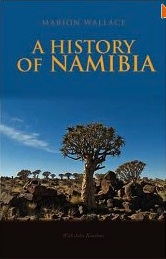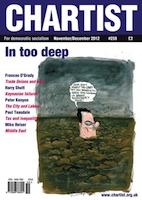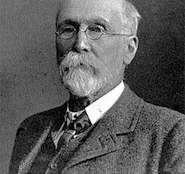BARRY WINTER reviews a history of Namibia, where the long struggle for social justice continues.
Many people today could be excused for not knowing much about Namibia. Situated south of Angola and north of South Africa, this large land mass, with its relatively small population, is seldom in the news.
Yet, as Marion Wallace’s in-depth study, A History of Namibia, ably reveals, Namibia has a remarkable history. Its varied peoples have experienced not only their own internal dynamics but were subjected to two periods of colonialism: first by Germany in the late19th and early 20th centuries; then by South Africa from 1915 until liberation in 1990.
South West Africa, as it was known under German occupation, underwent similar developments to many African colonies. White farmers displaced African pastoralists taking the best land for themselves and using Africans as cheap labour. Missionaries arrived to save African souls. Merchant capitalists were eager to exploit African workers for mining and other industries. During this period, different African peoples sometimes collaborated but increasingly resisted. In turn this led to more fierce forms of German domination as the occupiers brutally consolidated their hold on the territory.
Of the 1904-08 war of resistance which threatened German rule, Wallace writes: “By the time of the last major military engagement in 1908 Germany had committed genocide against the peoples of south and central Namibia.” Huge numbers of men, women and children died in concentration camps, prefiguring by decades what was to happen in Europe.
The second period of occupation came about because South African forces defeated the German colonists during the First World War. Technically, South West Africa was meant to be governed by South Africa under a League of Nations – and later a United Nations – mandate. South African governments thought and behaved very differently.
I can attest to this personally. When arriving at Johannesburg airport in the late 1960s, I was asked by a passport officer for details of my visit. Innocently, I replied that I was staying for a month in South Africa then five weeks in South West Africa. He fixed his eye on me saying coldly and firmly: “They are the same country.” His compatriots nodded their assent.
As the Apartheid system became more formalised in South Africa, so it was increasingly, and illegally, introduced into South West Africa. This was discrimination on a mass scale.
A hard fight
Over time, the growing struggle for independence led primarily by the South West Africa People’s Organisation (SWAPO) began to make inroads into the apartheid regime’s control. But it was a very hard fight. To an extent, the liberation struggle became engulfed in the Cold War conflicts over the future over the former Portuguese colony, Angola.
No less significantly, it broadened and deepened into a people’s struggle, involving women’s organisations and school students. Thousands of young people crossed the border into Angola to join SWAPO. Various churches also backed the independence movement.
What so impressed me when I was there was the warmth and energy of the African people I met, in spite of the history of white oppression. It was a humbling and enriching experience.
Today, in spite of its mineral wealth, Namibia remains a poor county. While formal colonialism has ended the struggle for social justice there continues.
A History of Namibia: From the beginning to 1990 by Marion Wallace is published by Hurst & Company, London (2012).
—-
 This article was first published in the November/December 2012 issue of Chartist magazine: www.chartist.org.uk
This article was first published in the November/December 2012 issue of Chartist magazine: www.chartist.org.uk


